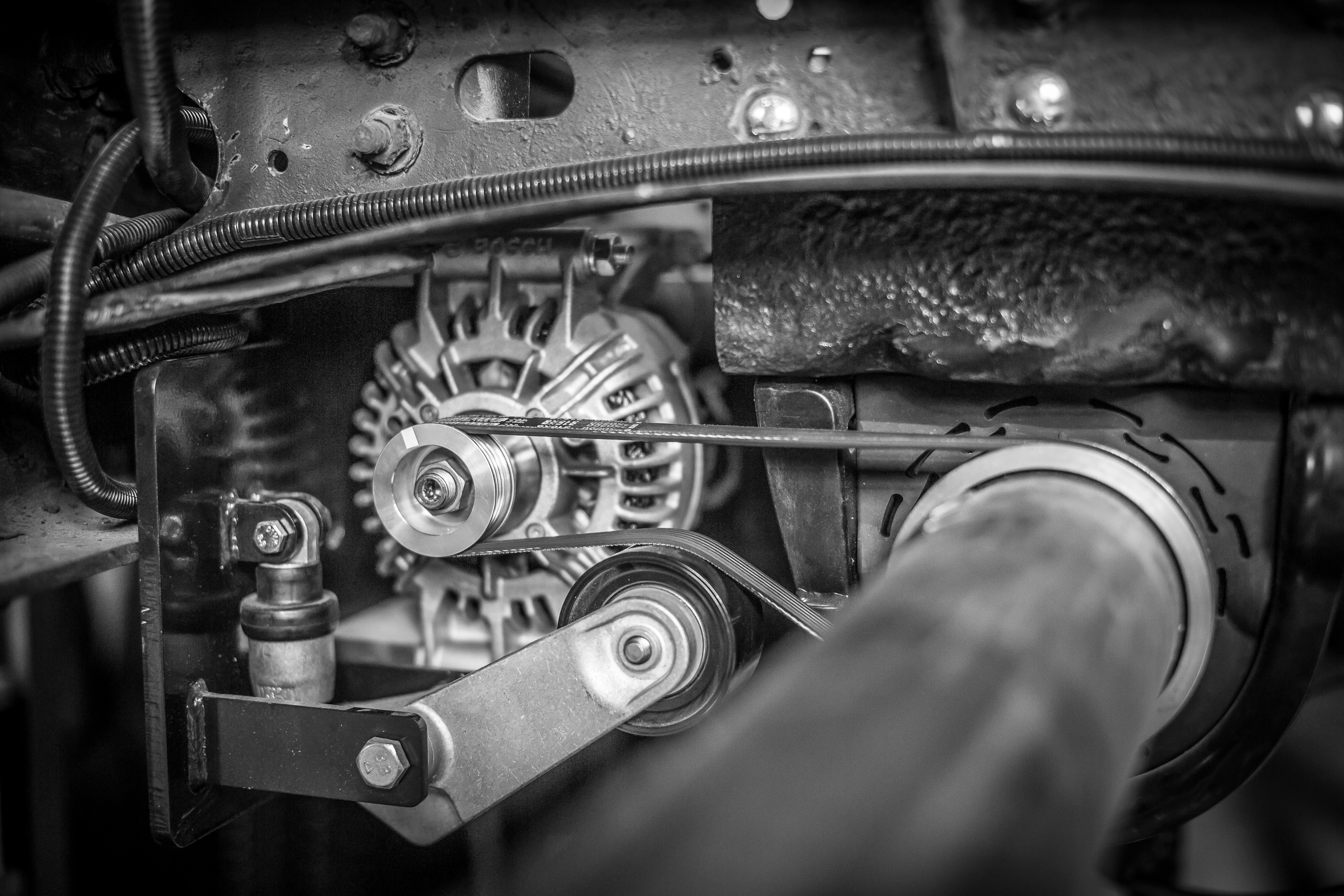The limitations of engine-mounted alternators & the future of 48V: A conversation with alternator expert Dan Smith
by Elayne Cronin, Ph.D. | Aug 05, 2021 | RelGen, Battery Recharge, Charging Solutions, Voltage Loss, alternators, 48V | 0 Comments
Dan Smith is an alternator expert who has worked in the rotating electrical manufacturing sales and distribution field for 48 years!! He works for Arrowhead Electrical Products, Inc. a distributor of electrical parts and components including starters, alternators, generators, and other mobile electrical components. Dan currently specializes in helping Original Equipment Manufacturers (OEMs) in developing and providing solutions in the rotating electrical world, predominantly with starters and alternators.
I spoke to him about alternators, the limitations of engine mounted alternators, the direction of 48V in the industry and the role Blackburn's technology RelGen will play in this transition.
Laynie: Engine alternators have a hard time fully charging auxiliary batteries through a drive cycle. Can you elaborate on that and explain why that is?
Dan Smith:
Engine mounted alternators partly cannot fully charge auxiliary batteries because of the capacity of the alternator on the vehicle. And traditionally it is not more than 20% reserve. If you want to charge a secondary set of batteries, you need to go to a heavier duty alternator and the recoup time is normally six to seven hours. So you're putting a lot of extra load on the engine drive train, and you're not always running six to seven hours. On an over the road truck that's not a difficult problem, but in a city delivery vehicle, it might actually be on the road for eight hours, but only run three. It's stop, start, stop, start. So using an auxiliary charging device, such as Blackburn's RelGen allows you to capture kinetic energy and turn it into a charging cycle, independent of the engine. So you're not putting the load on the engine and you're actually getting charging when the engines idle and doing nothing, when coasting or braking.
The problem is if you opt to go with a large an alternator, it is expensive and you may not have enough charge time. So the Blackburn system allows you to use a secondary charging system where you can also go to higher voltages than what the vehicle voltage is, which gives you a faster recovery time on your batteries.
A typical question we get is why not just get a larger alternator or a second alternator, can you explain why this is not the most efficient option?
Dan Smith:
Well with Blackburn’s RelGen system you're not adding extra load to the engine, so when you put a bigger alternator on the engine, or if you go with a second alternator on the engine, you're adding an additional 10, 20, 30 horsepower of draw and drag on that engine, which means you're using more fuel whenever you're running. Blackburn's design uses energy that would be wasted. It adds a drag to the driveshaft only when you're coasting or braking. So that's energy that's there but hasn't been captured. So you're capturing waste energy, very similar to what's done with a hybrid. The regenerative braking system allows you to charge the battery back when you're braking or coasting. The same thing happens with RelGen here, except you're using the drive shaft as your input source to your alternator.
The other thing is that Blackburn's controls allows you to turn the alternator off when you're accelerating, when you need power from the engine for your traction. If you put another alternator on the engine, you can't turn that off when you're accelerating. You can but it would be a completely different control system. So now you get into more engineering, more controls, more wiring in the engine compartment. And there's not always room in the engine compartment to add the additional material. With this one being mounted external of the engine, you have more real estate to use. You've got the ability to put in a specialized controller that gives you much more control, much more options.
RelGen can charge in 24 Volts and 48 Volts. Can you share your thoughts on the role 48 Volts will play in the future of the industry?
Dan Smith:
48 Volt is going to be a very large part of the future. Not only in trucking, but in automotive applications. And I think you'll see that it'll find its way into agricultural and marine applications as well. What people don't normally take into consideration is that all electrical appliances work on wattage. Wattage is amperage times voltage. The higher the voltage, the lower the amperage. So batteries store amperage, they are certain voltage of the battery, but they're storing amperage. So the less amperage you draw out of a battery, the longer it lasts in the cycle. The higher the voltage you go, the smaller the components can become because you don't need as heavy a wire to accomplish the same result. So a 48 volts water pump would be about a third to a quarter of the size of a 12 volt electric water pump. And it would draw approximately a quarter of the amperage. So the same battery bank would last four times as long in a 48 volt system, as it would in a 12 volt system and accomplish the same thing. That's lighter, less weight for the vehicle to be carrying around which aids with vehicle mileage. Smaller so that you can get more devices within a certain area. And it runs cooler because the amperage is what makes heat. So if you're drawing less amperage, you're making less heat. Therefore the apparatus tends to last longer. So yes, 48 volt will be part of the playing field for automotive trucking industry going forward. It's easy to do in a battery storage system, it's getting away from 120 volts. It's still below the threshold where if you're ground it out against yourself, it's not going to kill you. And you'll see that it will find its way very quickly into the RV market. You'll see more and more that will start to be 48 volt. And it's here to stay.
What do you see for Blackburn's role in the 48V transition?
Dan Smith:
Blackburn's 48 volt system is very interesting because it can replace an APU and the recharge times are minimal for an over-the-road truck. So not having to have an APU and not having to diesel the engine, especially in states where you have NTDs in the laws, you can't run the engine overnight, will make a big difference. I see RelGen as something that will be in the forefront of developing 48 volt systems within the trucking industry. These devices are going to be out there. They're already being developed for the RV market, they're being developed for the hotel load in the class A trucks. And there'll be a long, long line of things that will develop in the 48 volt market once the platform starts to really take off.
Thank you. Is there anything else you think is relevant that you would like to share?
Dan Smith:
Only that I think it's imperative that we continue to look at ways to capture energy that is wasted from vehicles. The internal combustion engine is one of the least efficient energy devices we have yet it produces a tremendous amount of kinetic energy that is wasted. And I think that RelGen from Blackburn is a revolutionary design and the thought that has gone into the control system in order to be able to only draw a load when you're stealing free energy is just a wonderful thing.
Most Popular
Categories
- RelGen (18)
- Anti-Idle (14)
- Charging Solutions (13)
- Battery Recharge (11)
- Electric APU (10)
- Liftgates (10)
- Preventative Maintenance (7)
- Voltage Loss (6)
- DC/DC converters (4)
- Driver Retention (4)
- Uptime (4)
- fuel savings (3)
- 48V (2)
- Blackburn Team (2)
- Solar Panels (2)
- Consulting (1)
- DOT compliance (1)
- Espar Airtronic D2 Diesel Fired Air Heater (1)
- Financing (1)
- Hardware as a Service (1)
- Power Wall (1)
- alternators (1)
- data (1)
Archives
- October 2020 (4)
- November 2020 (4)
- May 2020 (3)
- September 2020 (3)
- March 2021 (3)
- April 2021 (3)
- July 2020 (2)
- August 2020 (2)
- January 2021 (2)
- June 2020 (1)
- July 2021 (1)
- August 2021 (1)
- October 2021 (1)
- January 2022 (1)
- February 2022 (1)
- March 2022 (1)
- June 2022 (1)
- October 2022 (1)
- January 2024 (1)
- March 2024 (1)
- May 2024 (1)
- September 2024 (1)











